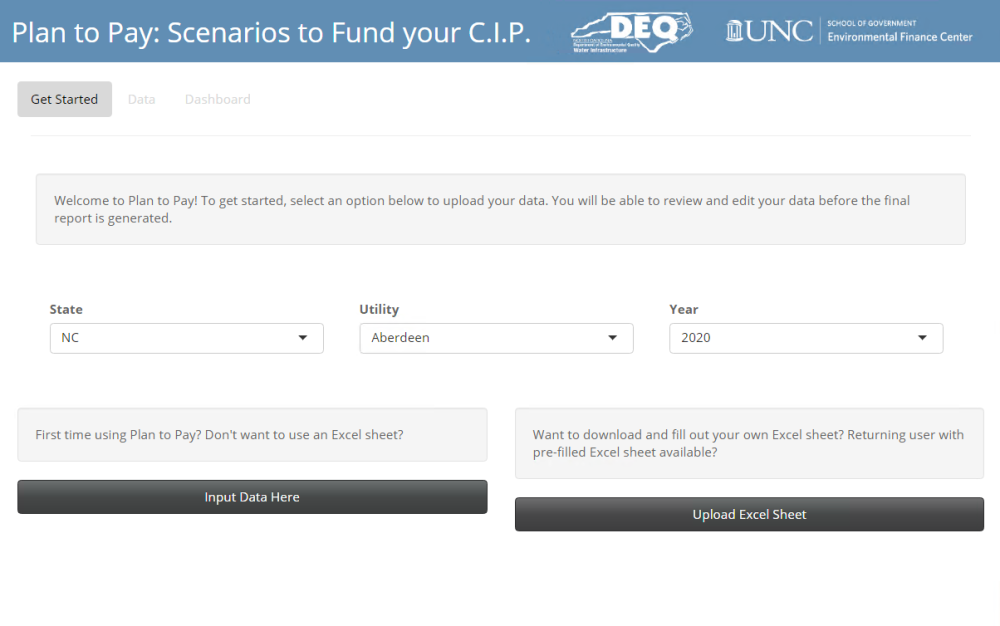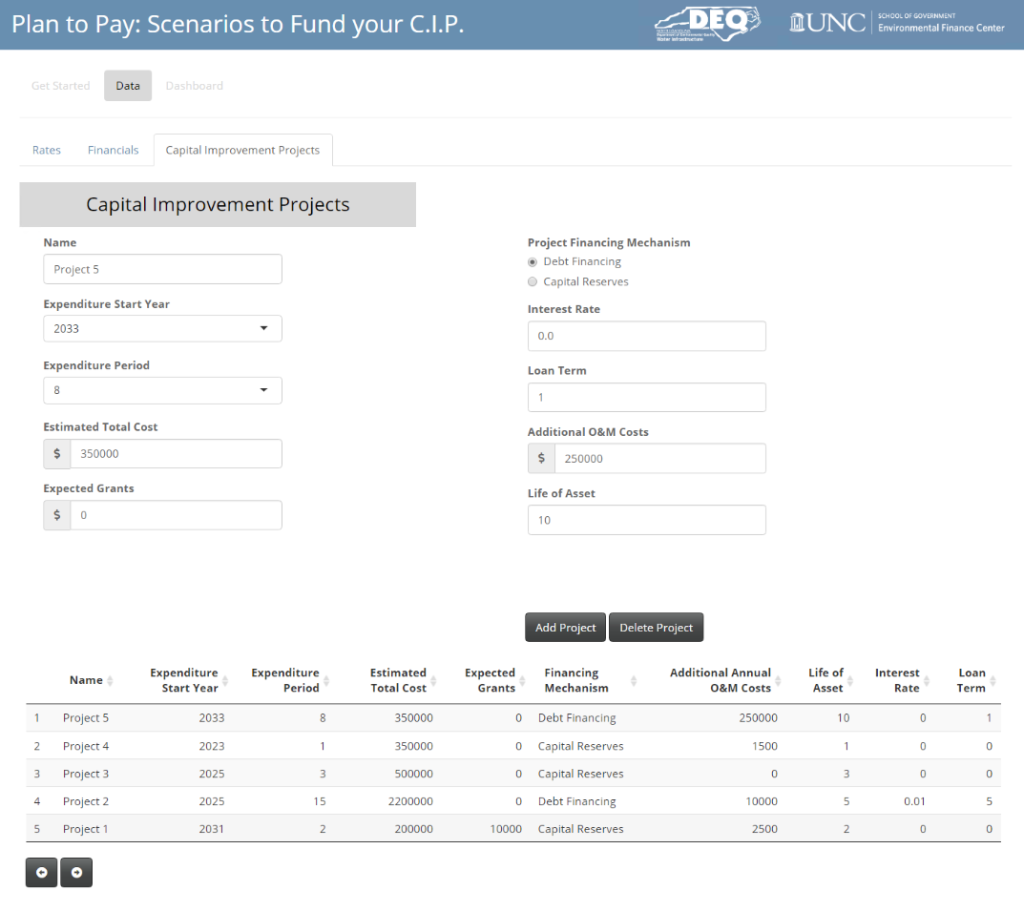
Post by Delia Wegner, Graduate Research Assistant at the UNC EFC
What is a Capital Improvement Plan?
Paying for the rehabilitation, replacement, and upgrades of water and wastewater equipment is an ongoing issue for utilities of all sizes. Like the value of a new car when you drive it off the lot, all new equipment will deteriorate over time and will eventually have to be replaced. This loss in value, called depreciation, is why it is important for utilities to plan for future equipment costs with the help of a Capital Improvement Plan (CIP). A CIP ensures that a utility has considered future equipment needs, their costs, and when they need to be implemented. Without a CIP, utilities may not be prepared to cover the cost of new equipment installations, which could place a large financial burden on customers or lead to public health risks if equipment fails prior to timely replacement.
Plan to Pay: Scenarios to Fund your Capital Improvement Plan
The Plan to Pay Tool assists utilities in understanding their capital improvement needs. The tool requires a user to input planned projects and then displays how those projects will increase future expenses. Loans and grants may help the utility pay for capital projects upfront, so the tool lets a user see immediate capital costs as well as the costs of debt service and additional operational expenses.
Excel-based Tool
The UNC EFC has provided an Excel-based Plan to Pay tool on the UNC EFC website since 2015. This tool allowed utility managers to enter their capital improvement needs and current financial data to assess the best way to plan for future capital costs. This tool gave guidance on CIP funding strategies, for example a “pay-as-you-go” model through cash reserves versus funding via debt service. Information about the original Excel tool and other capital planning resources can be found in a recent blog post.
Coming Soon: New Plan to Pay Tool
The UNC EFC will soon be releasing a new-and-improved Plan to Pay Tool that simplifies the original tool while still providing useful capital planning insights. Rather than downloading an Excel file, this tool will be web-based and will connect to financial data from the EFC Dashboards. This connection will simplify use of the tool as users will not have to go searching for their utility’s financial data.
How to use the new Plan to Pay Tool
The new Plan to Pay Tool has three main steps: Get Started, Data, and Dashboard. The Get Started tab allows the user to either use financial data from the EFC dashboard or to upload an Excel sheet with their own data if they prefer.

After choosing their data source, the user can edit any of the financial fields in the Data step. This is also where the user will add their future capital improvement projects.

After the data has been entered, the user can view their Dashboard with projected revenues, reserves, and project or debt service payments for the next 20 years. This Dashboard Report can be downloaded in Excel format. If any projects or financials have changed, the user can reupload the same Excel Dashboard Report in Get Started and run the tool again.

What to know about the data
The Plan to Pay Tool is intended to be one step within the UNC EFC’s suite of tools. Utility managers can first assess the current financial performance of their utility with the Financial Health Checkup Tool. Next, the Plan to Pay Tool can be used to inform future decisions on when to implement capital improvement projects and how to pay for them. Finally, the Rates Analysis Model can be used to set water and wastewater rates based on the financial and capital improvement needs identified in the previous tools.
This new tool will provide a streamlined way to help utilities make decisions about when and how to implement capital improvement projects. By using data from the EFC Dashboards and making the data-entry process more intuitive, the UNC EFC aims to simplify the challenging task of planning for a utility’s future.
Learn more about upgrades to the EFC’s tools.
Need technical assistance? The UNC Environmental Finance Center is here to help!
The Environmental Finance Center at UNC-CH offers free one-on-one technical assistance for small water systems. If you have an interest in our support, fill out our interest form here or contact mullins@sog.unc.edu.
Visit https://efc.sog.unc.edu/technical-assistance/ to read more about technical assistance.

